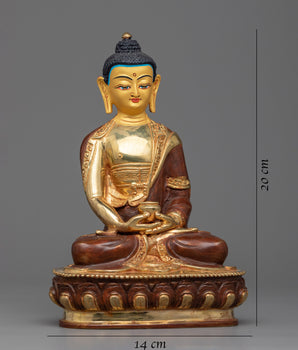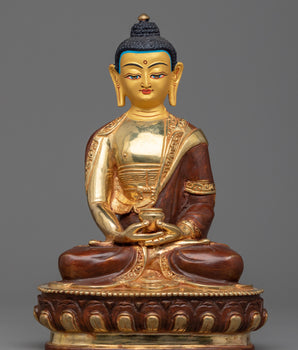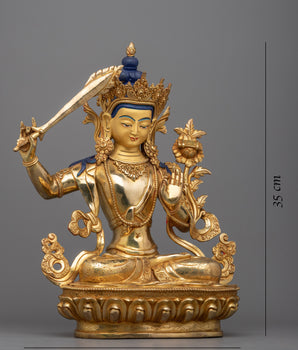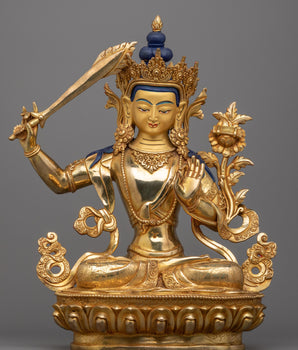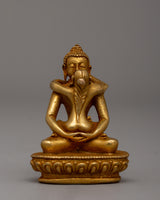
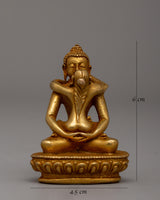
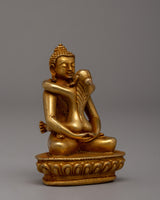
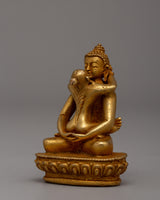
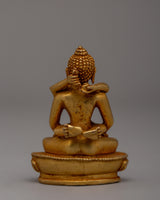
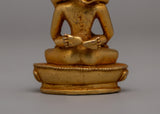
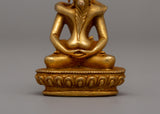
Samantabhadra with Consort Figurine | A Symbol of Unity

100% AUTHENTIC

HANDMADE

FREE SHIPPING
Yab-Yum Deity Samantabhadra with Consort Figurine
----------------------------------------------
Size: 6cm (Height) x 4.5cm (Width)
Weight: 0.100kg
Materials: Gold Polish, Copper Body
----------------------------------------------
About Our Statue
The Samantabhadra with Consort figurine is a beautifully crafted statue suitable for spiritual settings or altars. This figure, which stands 6 cm tall and 4.5 cm wide, is made of copper and has a polished gold finish, giving it a refined and lustrous appearance. The figure's intricate detailing enhances its sacred presence, with Samantabhadra seated in a meditative posture on a lotus base, representing purity and enlightenment. The tranquil expression on his face, combined with the gentle embrace of his consort, conveys a sense of peace and unity.
The gold polish not only enhances the statue's visual appeal, but it also represents the radiant nature of the Buddha's teachings. This statue's meticulous craftsmanship ensures that every detail, from the flowing robes to the fine facial features, is perfectly defined. Despite its small size, this figurine is an effective representation of the unity of wisdom and compassion, making it an important addition to any collection. This Samantabhadra with Consort figurine is ideal for those who want to improve their meditation or spiritual practice.
Introduction to Samantabhadra
In Mahayana Buddhism, Samantabhadra is a bodhisattva (buddha-to-be) representing benevolence or happiness. He is frequently depicted in a triad with Shakyamuni (the Buddha) and the bodhisattva Manjushri on a three-headed or single-headed elephant with six tusks. In China, he is the patron deity of Mount Emei, located in the province of Sichuan. He is regarded as the manifestation of Vairocana, the cosmic Buddha, in Vajrayana, or Tantric Buddhism. In Chinese, he is known as Puxian, while in Japanese, he is known as Fugen.
How do you take care of your statues?
• Place them at room temperature, avoiding direct sunlight.
• Make sure that the area where your statue is placed is completely free of moisture and dust.
• Place it at the highest place on your altar after being consecrated by Lama/monks. The best practice is to keep them covered inside a glass cabinet.
• Do not use your bare hands or any objects with a rough surface to wipe the face.
• Directly touching with the bare hand objects can smudge the face, leaving scratches.












